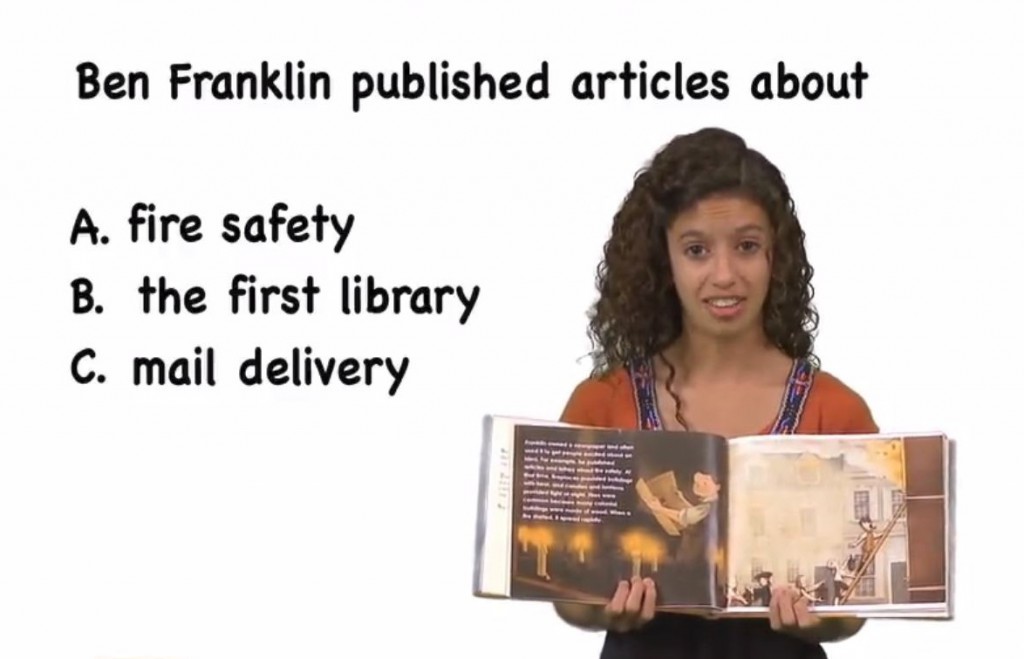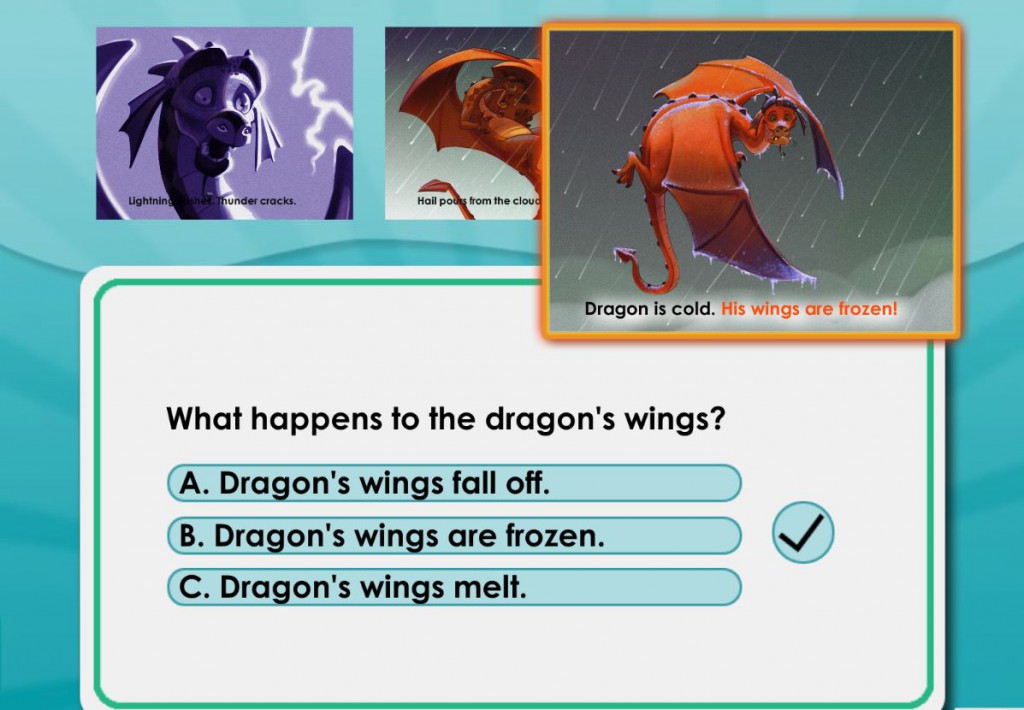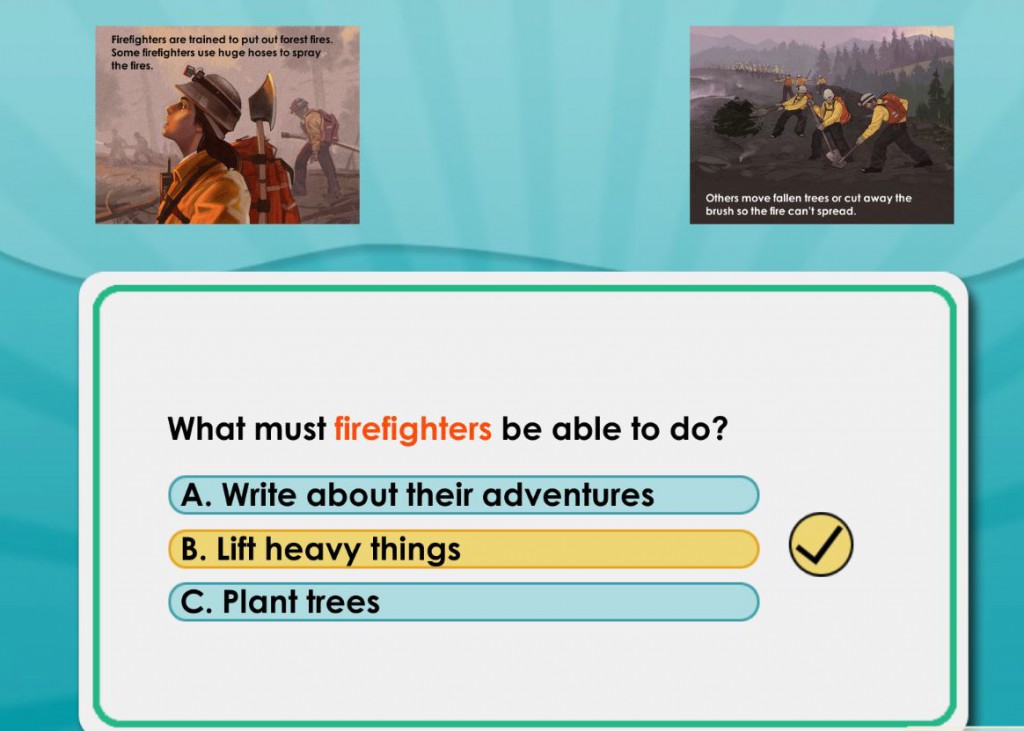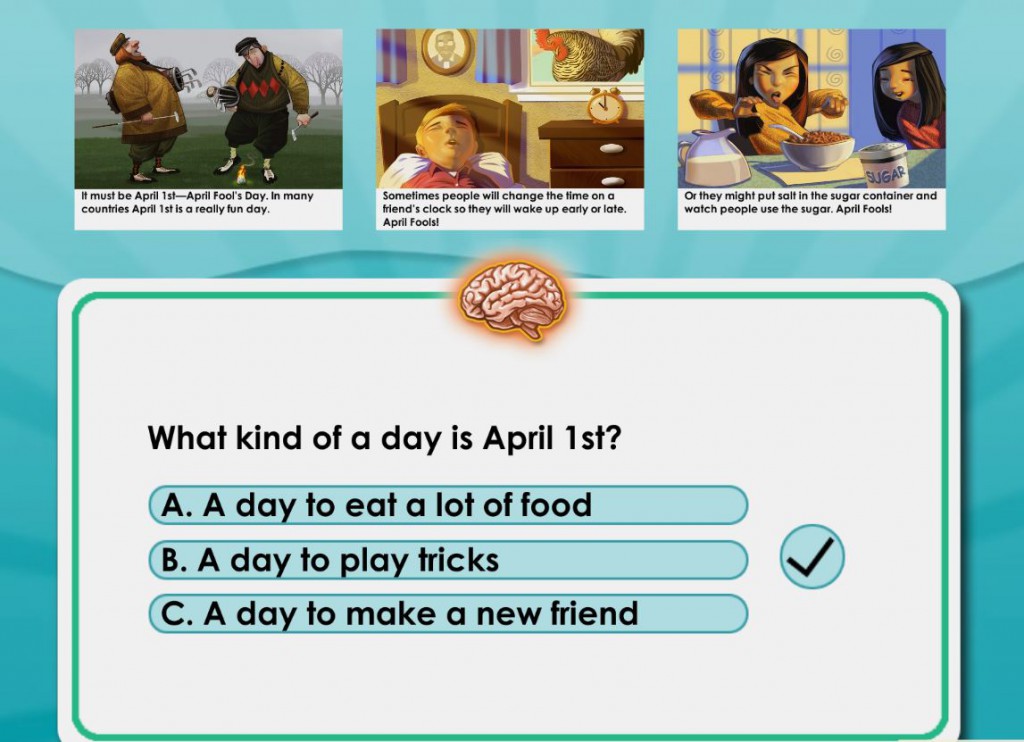
Have you ever wondered why kids sometimes have trouble answering questions about what they read?
Sometimes, it comes down to the question itself--and knowing the difference between literal and inferential questions.
When a question is 'literal,' that means the answer will come in a common, usual, or expected form. Let's say students have just read a book about a dragon. Then, the teacher asks a literal question:
In the book, what happens to the dragon's wings?
Look In the Book
While a literal question like this may seem simple, younger students may feel still unsure about how to answer. So what do they do?
One of our favorite Imagine Language & Literacy activities offers a great strategy: simply 'Look In the Book'--that's where the answer to a literal question lies.
First, as students work through this activity, they learn what a literal question is. This knowledge gives them the confidence to know where to look for an answer.

In this case, students remember reading that the dragon's wings are frozen. That's the answer to the literal question "what happens to the dragon's wings!"
Even older students can benefit from this strategy, which reminds them to dig deeper into their reading.

Of course, sometimes finding an answer to a reading question isn't so straightforward.
When a question is 'inferential,' that means the answer will come from evidence and reasoning--not from an explicit statement in the book.
So, let's say that students have just read a book about firefighters. Then, the teacher asks this inferential question:
What must firefighters be able to do?
Look and Think
This question could be either literal or inferential. But if students don't find a literal answer anywhere in the book, what's next?
Another Imagine Language & Literacy activity encourages students to 'Look and Think' before they answer. Because--as we saw above--inferential questions require students to gather a little evidence before they answer the question.
In this case, students remember reading that firefighters use huge hoses and move fallen trees. From this evidence, a student may "infer" that those hoses and trees are probably hard to lift.

So, logically, they can answer that firefighters have to "lift heavy things." But to arrive at this conclusion, students must always 'Look and Think.'
How might a student answer the following inferential question about April 1st?

Before students can answer questions about what they read, they can always look in the book, as already mentioned. But they also need to understand the kind of question being asked.
While literal and inferential questions aren't the only kinds of questions students will hear in their lives, they're certainly common within a classroom! That's why activities like 'Look in the Book' and 'Look and Think' offer great strategies that empower kids to learn.
And once students know the right strategy for answering a question, they will remember what they've read--and want to read more.


